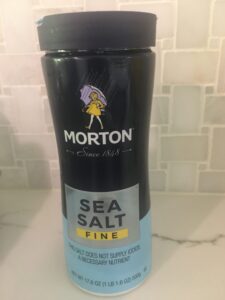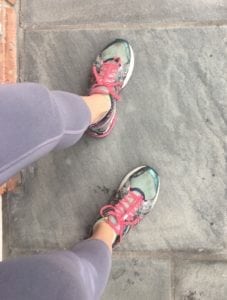Are you wondering if there are lymphedema exercises for legs that will relieve swelling? We don't blame you! After all, swollen legs aren't just uncomfortable. They could be a sign of a serious condition called venous insufficiency. (Also called VI, this is a condition in which your veins fail to circulate blood properly, especially to your lower extremities). As a result, you may develop troubling symptoms. One common side effect of VI is edema (swelling) in your the lower legs. And when you experience edema for an extended period of time, you are more susceptible to venous ulcers, open wounds that develop on your legs as a result of increased vein pressure due to your malfunctioning venous valves.
While ulcers can be frightening, there are several ways in which we can treat these sores. First and foremost, it's important to address the underlying cause of the problem--your venous insufficiency and edema.
To help control edema, we recommend that patients wear compression stockings; the pressure will help encourage pooling blood to flow out of your legs and back up to your heart, reducing the swelling you experience in your legs. Elevating your legs can help as well: if you put your feet up above the level of your heart, it will also encourage pooling blood to leave your legs.
But there's two more ways we can control edema and VI, reducing your risk of venous ulcers: diet and exercise!

If you've noticed swelling in your legs, it's a great time to start changing your diet! First and foremost, cut back on your salt intake. Too much sodium in your diet can lead to water retention, making your edema symptoms worsen. Keep in mind that lots of canned soups, snacks, cheeses and even pickles are high in sodium, so it's not enough to just bypass the salt shaker.
Next up on the dietary schedule? Drink more water. While it may seem strange, increasing your fluid intake can actually help flush retained fluid from your body. So, if edema is a problem for you, grab an 8-ounce water glass and start sipping!
Not a fan of H20? While water is best, other liquids may help you fight fluid retention. Some people find benefits from sipping dandelion tea. But since this fluid can interact with your medications, you should never drink this brew without your doctor's approval. A safer choice? Try drinking lemon water! This will add a bit of pep to your regular water. And, as an added bonus, the lemon may help flush toxins--and excess fluid--out of your body! Finally, cranberry juice can also be a helpful beverage. Packed with magnesium, potassium and calcium, cranberry juice may help maintain proper fluid balance in your body. (Plus, it could help prevent urinary tract infections!)
Now, other nutrients may also help avoid water retention, but if your edema is related to vein disease, you should discuss serious dietary changes with your vein specialist. And you should also take a look at your exercise routine!
In order to prevent symptoms from getting worse, you should choose loose-fitting clothing, and avoid tight jewelry as wear. Even your shoes should feel comfortably loose, to avoid constricting any affected areas. In fact, the only tight articles of clothing you should wear with this condition are compression garments recommended by your healthcare providers.
If lymphedema affects your legs, there are things you should do to protect your health. But there are also actions you need to avoid. First, you shouldn't put a heating pad on any area of affected skin. When your legs are impacted, try not to stand for too long. Then, when you're sitting or lying down, elevate the affected leg. Finally, make sure not to get a new tattoo on any body part that's affected by lymphedema.
As long as your doctor has cleared you for physical activity, certain forms of lymphedema exercises for legs can help manage VI, edema and ulcers. Exercises that are particularly effective include:

Walk your way to a lower risk of vein disease!
Of course, the best way to prevent ulcers is to maintain ideal vein health. If you start to notice any signs of VI or edema, come in and schedule a diagnostic vein scan. That way, we can stay on top of your vein health before more serious problems set in.

Scheduling
Please contact our dedicated specialists to schedule a consultation today.
2025 Texas Endovascular. All rights reserved. Website Design by Healthcare Success